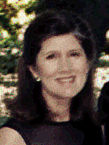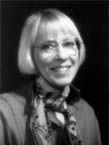The surveys can be taken in any location and require little time. A very long survey with eighty or so items usually requires no more than 20 minutes. Gender, ethnicity, major, year in school, and previous coursework can all be included in a survey.
Another feature that makes data collection and analysis easier is to use an optical scanning form and scanner (e.g. Scantron). This allows these data to be directly imported into a spreadsheet or statistical application for analysis.
Dunn Learning Styles - The instrument assesses five different stimuli: environmental, emotional, sociological, physical, and psychological. Within each of these stimuli are a total of about 20 elements which individuals receive feedback on. A number of faculty have reported success with this instrument and the information it provides about students' learning styles.
Sources
Angelo, T. A., and Cross, K. P. (1993). Classroom assessment techniques: A handbook for college teachers, 2nd ed. San Francisco: Jossey-Bass.
Braskamp, L. and Ory, J. (1994). Assessing Faculty Work: Enhancing individual and institutional Performance. San Francisco: Jossey-Bass.
Centra, J. A. (1973). Effectiveness of Student Feedback in modifying college instruction. Journal of Educational Psychology 65 (3), 395-401.
Davis, B. G. (1993). Tools for teaching. San Francisco: Jossey Bass.
Fowler, F. J. (1993). Survey research methods. Newbury Park, CA: Sage.
Gramson, Z. and Chickering, A. (1977). Seven principles for good practice in undergraduate education. AAHE Bulletin, 39, 5-10.
Henderson, M. E., Morris, L. L., & Firz-Gibbon, C. T. (1987). How to measure attitudes. Newbury Park, CA: Sage.
Murray, H. G. (1991). Effective teaching behaviors in the college classroom. In J. C. Smart (ed.), Higher education: Handbook of theory and research, Vol. 7 (pp. 135-172). New York: Agathon.
National Research Council (1997). Science teaching reconsidered: A handbook. Washington, D. C.: National Academy Press.
Reynolds, A. (1992). What is competent beginning teaching? A review of the literature. Rev. Educ. Res. 62, 1-35.
Shulman, L. S. (1990). Aristotle had it right: On knowledge and pedagogy (Occasional paper no.4). East Lansing, MI: The Holmes Group.
Shulman, L. S. (1991). Ways of seeing, ways of knowing - ways of teaching, ways of learning about teaching. Journal of Curriculum Studies, 23, (5) 393-395.
Theall, M. and J. Franklin, Eds. (1990). Student ratings of instruction: Issues for improving practice. New Directions for Teaching and Learning, No. 43. San Francisco: Jossey-Bass.
Eileen Lewis
Department of Chemistry
Caņada College
 Early in my teaching career, I noticed that students could memorize equations, solve problems, and even use terms fairly correctly. However, further questioning revealed that students' knowledge was pretty shallow. So even though my "lectures" encouraged conceptual understanding, my exams were more traditional. Since students are pretty efficient about learning what they need to be successful in a course, I changed the assessments of students' understanding - emphasizing making sense of phenomena, connecting ideas, and giving explanations about why in everything they observed or did. Writing these questions was much harder, but it changed the type of learning that went on in the class. Students knew they had to understand the concepts, not just be able to parrot them back and solve algorithmic problems. These new assessments also served them in future courses because they really understood and had made connections between concepts.
Early in my teaching career, I noticed that students could memorize equations, solve problems, and even use terms fairly correctly. However, further questioning revealed that students' knowledge was pretty shallow. So even though my "lectures" encouraged conceptual understanding, my exams were more traditional. Since students are pretty efficient about learning what they need to be successful in a course, I changed the assessments of students' understanding - emphasizing making sense of phenomena, connecting ideas, and giving explanations about why in everything they observed or did. Writing these questions was much harder, but it changed the type of learning that went on in the class. Students knew they had to understand the concepts, not just be able to parrot them back and solve algorithmic problems. These new assessments also served them in future courses because they really understood and had made connections between concepts.
Elaine Seymour
Bureau of Sociological Research
University of Colorado, Boulder

Tell me more about this technique:

